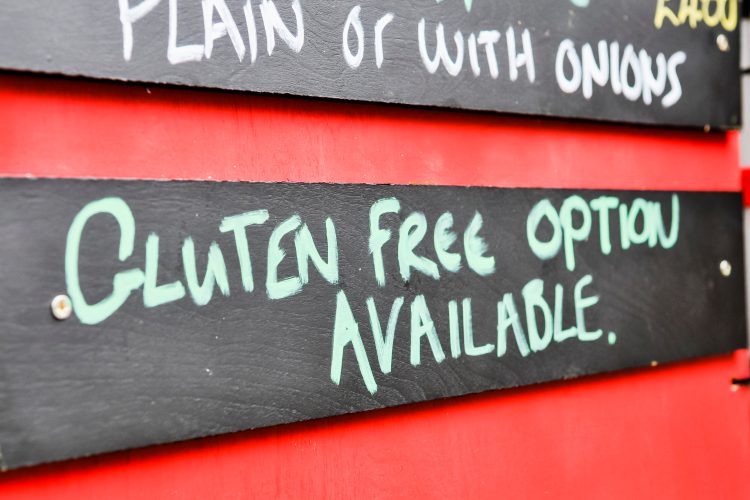Veganism: truths and misconceptions around allergens
- Like
- Digg
- Del
- Tumblr
- VKontakte
- Buffer
- Love This
- Odnoklassniki
- Meneame
- Blogger
- Amazon
- Yahoo Mail
- Gmail
- AOL
- Newsvine
- HackerNews
- Evernote
- MySpace
- Mail.ru
- Viadeo
- Line
- Comments
- Yummly
- SMS
- Viber
- Telegram
- Subscribe
- Skype
- Facebook Messenger
- Kakao
- LiveJournal
- Yammer
- Edgar
- Fintel
- Mix
- Instapaper
- Copy Link
Posted: 19 April 2023 | Liljia Polo-Richards | No comments yet
Liljia Polo-Richards explains why it’s important to distinguish between vegan and other free from options when it comes to serving hypersensitive consumers.


A vegan menu isn't always appropriate for hypersensitive consumers
The global vegan market was estimated to be worth USD 24.59 billion (approximately £18.5 billion) in 2022 and it is expected to nearly double by 2028. In the UK alone, 1.4 million people follow a vegan diet, which equates to 2.6 percent of the population.
Given these figures, it is no surprise that vegan products are popping up more and more on the supermarket shelves and many companies are taking advantage of this trend to make their products look appealing to a wider market.
If we are looking at the restaurant market, it is not unusual to either find a wholly separate vegan menu or many vegan options on offer. It is clear that more and more people embrace veganism or they simply enjoy some of the vegan options while trying to cut down their animal products intake.
I think this demonstrates how businesses are adapting to the demands of their customers and how they are trying to offer a wider choice, which I can only see as a positive step.
However, I also see some quite strong gaps and pitfalls in the way vegan food is described to customers, which represents a real concern to people affected by food allergies.
What is veganism?
Before I go into this particular point, I wanted to take a moment to remind ourselves what being vegan actually means. Below is the definition offered by the Vegan Society:
“Veganism is a philosophy and way of living which seeks to exclude—as far as is possible and practicable—all forms of exploitation of, and cruelty to, animals for food, clothing or any other purpose; and by extension, promotes the development and use of animal-free alternatives for the benefit of animals, humans and the environment. In dietary terms it denotes the practice of dispensing with all products derived wholly or partly from animals.”
Not always what’s expected
If we delve deeper into the guidelines offered by the Society with regards to expectations for food manufacturers and restaurants, they expect cross-contamination with animal products to be kept to a minimum. However, there is no set requirement for their products to be completely free from animal traces as their requisites focus on the overall suitability of ingredients and preparation methods from a vegan perspective.
Whilst this has not been done intentionally or to cause any harm, the vegan guidelines have somehow created a huge confusion around food labelling, where products are considered dairy free and/or egg free by default because they are vegan. Vegan does not equal free from animal allergens, and in fact many vegan products can contain small traces of dairy or egg. You simply need to check the ingredients and allergen labels on many vegan products to realise that, for example, a vegan ice cream might be completely unsuitable and unsafe for someone who is allergic to milk.
More recently, the Food Standards Agency (FSA) launched a consultation following major concerns raised by the UK’s largest food businesses with regards to Precautionary Allergen Labelling (PAL). One of the points covered relates to the use and misuse of the “free from” statements, which has sadly led to some unnecessary deaths in recent years, where products were advertised as free from when in fact these were produced on the same production line as products made with animal-derived ingredients.
I believe that this new guidance, coupled with more regulation around what constitutes vegan food, would help protect hypersensitive consumers and offer clarity on allergens in products.
Loose terminology?
Another point I want to cover, which I also believe is hugely worrying, is the “free” usage of the word vegan with regards to anything that relates to dietary requirements. Many restaurant workers seem to refer to the vegan menu when a coeliac or allergic customer asks to see a specific allergen menu or simply wants clarity with regards to their offering.
Whatever the reason for the misunderstanding, it should not be acceptable for any business serving food to have staff confusing two important and completely different terms. As we explored above, vegan means that the food is not made with animal products (albeit that it allows potential traces), whereas a food allergy or coeliac disease represents a medical condition where the person cannot eat a particular allergen or group of allergens. The two definitions are not comparable and completely unrelated, and confusing the two can be dangerous and costly on many levels.
Investing in suitable and good quality allergen training is certainly something that any business should look into to ensure their staff understand the key principles of allergen management and how to keep their customers safe.
It is clear that more needs to be done in this space to provide more clarity to both the consumer and the food industry with regards to what should and should not be considered vegan, and clarify acceptable guidelines and regulations around food labelling. Not only this will protect businesses from incidents, but it will offer peace of mind and safety to people with allergies.
And to be clear, if a customer is asking for gluten free options, they do not want to see your vegan menu.
About the author
Liljia Polo-Richards is the Director and Founder of AllergyCompanions.com. The website launched in October 2021 as a resource to help people affected by food allergies, intolerances and coeliac disease find and review venues that cater for their requirements across the UK and Republic of Ireland.
Related topics
Allergens, Contaminants, Food Safety, Plant based, Regulation & Legislation, retail









